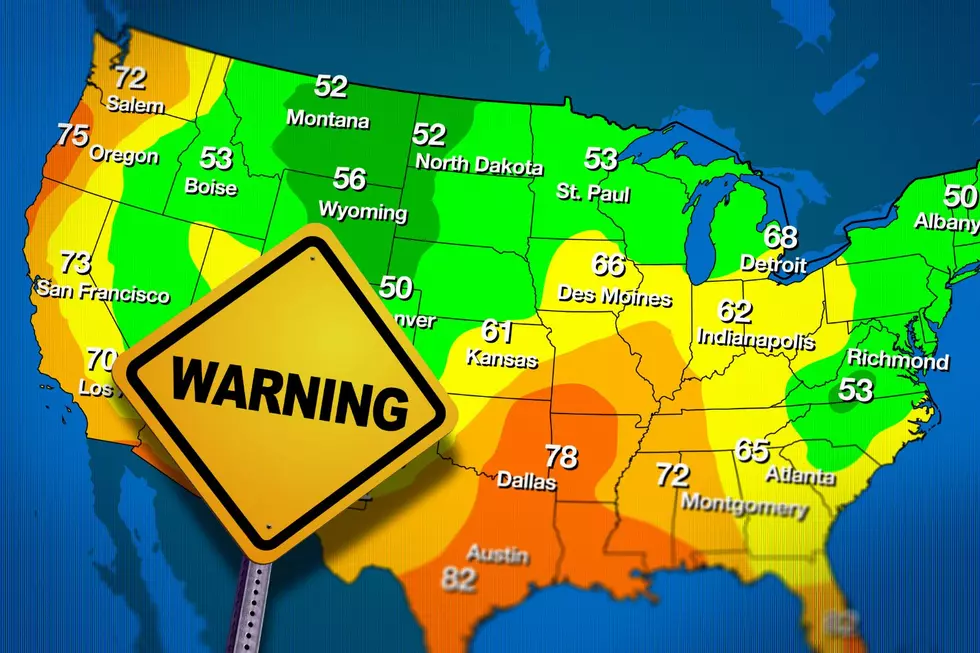
Here’s How You Can Save Lightning Bugs in Kentucky
Aren't the colors of the changing leaves absolutely stunning? I have been taking the scenic route every chance I get to work and to run errands just so I can drive around a look at all of the beautiful red, orange, and golden trees along the way. Soon they will all fall to the ground, and I want to enjoy them while I can.
No matter how beautiful, I know a yard covered in leaves may be your worst nightmare if raking is your responsibility. If that's the case, I have some good news for you. Especially if you love lightning bugs. Or Fireflies, whatever you like to call them.
Lightning Bugs? Yep! That's because they are disappearing.
Lightning Bugs are Disappearing
Just this past summer, Chad and I were talking about how we hadn't seen very many lightning bugs compared to years past. We all have nostalgic memories of catching the little glowing insects in a jar, or running around in a field of them. I used to rescue them from the wave pool at Atlantis.
I saw one this year. According to Firefly.org, the lightning bug population has decreased all over the world.
Why are Lightning Bugs Disappearing?
Several factors play into the dwindling of numbers with the most common being light pollution and human interference such as pesticides and land development.
"Human light pollution is believed to interrupt firefly flash patterns. Scientists have observed that synchronous fireflies get out of synch for a few minutes after a car’s headlights pass. Light from homes, cars, stores, and streetlights may all make it difficult for fireflies to signal each other during mating—meaning fewer firefly larvae are born next season."

The other factor is that their natural habitats are being disturbed to make way for businesses or developing neighborhoods. The undisturbed land with rotting wood, layers of plants and leaves that allow water to collect for a damp and humid environment is perfect for lightning bug larvae to grow and emerge each summer. However, once the land is cleared and buildings go up, they are maintained and landscaped so much that there aren't as many safe places for lightning bugs to multiply like they once could.
How you can help save the lightning bugs
Because humans are the number one suspected cause of the decrease in population, there are things we can also do to help give them the environment they need to hopefully come back each summer. Those things actually start now in the fall if we want to see them again next year. Here is a list of tips from The Farmer's Almanac:
- Allow logs to rot. Fireflies spend up to 95% of their lives in larval stages. They live in rotting logs, soil/mud/leaf litter and spend from 1-2 years growing until finally pupating to become adults.
- Turn your lights off at night (lights can confuse them when they’re trying to mate).
- Refrain from using lawn chemicals.
- Plant a garden! Gardens are meccas for fireflies, helping to replace lost habitat. They also supply fireflies with lots of food sources. If you have garden snails, slugs, worms, and other insects, fireflies can lend a hand by helping to control these pests. Plus, females need a place to lay eggs and gardens offer an oasis with a source of soil moisture for larval development.
- Plant trees and native grasses.
- Don’t over-mow your lawn.
- Don’t rake leaves and bag them up for the trash. You are raking up firefly larvae and discarding them.
So there you go! If you need a reason to not worry about raking your yard, just show this to your spouse. I think I may make a sign that says something like "Excuse the mess! We're saving lightning bugs."
Quiz: Do you know your state insect?
Gallery Credit: Andrew Vale
More From WKDQ-FM









